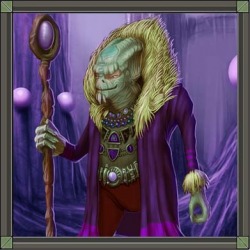

Fighters, clerics and thieves have improved hit-dice (D10, D8 and D6 respectively) over the previous edition. The Player's Handbook brought about other changes in the game and its character classes. High ability scores in statistics considered pertinent to the class would grant an experience bonus. Additionally, certain unusually high or low ability scores could proscribe class choice further "too high" an Intelligence could disallow being a Fighter, while a Charisma of 5 or less would require the character to become an Assassin. For instance, a character wishing to be a Fighter required at least 9 Strength the more discriminating Monk required 15 Strength, 15 Wisdom, 15 Dexterity, and 11 Constitution. In the 1st edition of Dungeons & Dragons, a character's ability scores directly tied into what class choices were legal for them. Instead, a character had to start as a Fighter, change classes to a Thief, and finally switch classes once more to become a Bard. The Player's Handbook also introduced the Bard as a sixth base class however, its usage in 1st edition was more akin to what would be called a prestige class in later editions, as it was not a legal choice for a starting character. The five standard base classes, five sub-classes in the Player's Handbook are listed in the table to the right. Dwarves and Halflings were restricted to the Fighting Man class, and Elves were restricted to the Fighting Man and Magic-User classes all three races had limited level advancement.Īdvanced Dungeons & Dragons loosened the restrictions on race and class combinations, although non-human races often had restricted choices among classes and maximum levels they could reach in a class.

In many ways, other classes are thought of as alternatives that refine or combine these functions. These four fantasy gaming archetypes represent four major tactical roles in play: the Fighter offers direct combat strength and durability the Thief offers cunning and stealth the Cleric provides support in both combat and magic and the Magic-User has a variety of magical powers. The first supplement, Greyhawk, added the Thief as a fourth main class, as well as the Paladin as a fighter subclass. In the original Dungeons & Dragons boxed set, there were only three main classes: the Cleric, the Fighting man, and the Magic-User. In addition, each level grants special abilities specific to the class for example, a Paladin gains the ability to "Turn" (Repel) undead at a certain level.Ĭlasses by editions Main article: Editions of Dungeons & Dragons Throughout the editions of Dungeons & Dragons, an increase in level has generally brought about increased hit points, more skills / proficiencies, a bonus to the accuracy of physical strikes, more magical spells for spellcasters, and better " saving throw" bonuses at resisting hostile magical effects. Each increase grants the bonuses of the next level, strengthening the character. For instance, a fighter is likely to have large amounts of hit points and possess great skill at attacking an opponent directly in physical combat, while a wizard would be physically frail yet have a selection of powerful magic spells with which to aid the party.Īs a character gains experience points, they are likely to increase the "level" of their class. A character's class affects a character's skills and abilities directly.


 0 kommentar(er)
0 kommentar(er)
